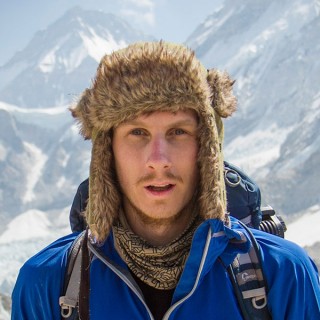The first day on the job is nerve-wracking for anyone, but when you’re a multimillion dollar ROV venturing into one of the most inhospitable landscapes on the planet you’d have a pretty good excuse to feel nervous. Everything yesterday with ROV SuBastian went as smoothly as we could have hoped. We all get a quick nights rest and are back ready to go at sunrise. It’s dive two for the #hydrothermalhunt and we’re making another dive at Daikoku seamount for what may be our final visit.
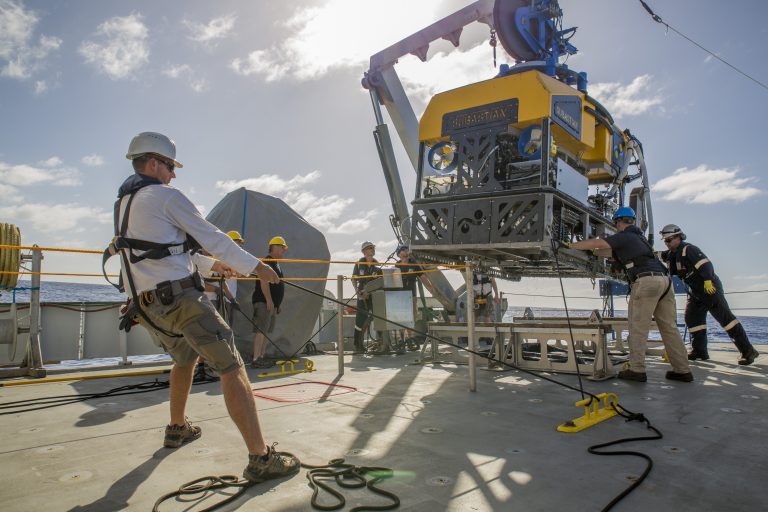
Tubeworms find a way
Our first priority is to collect some tubeworms, intriguing chemosynthetic creatures who have these little red plumes flaring out of the top of their tubes. The red plume is an organ for exchanging compounds with the environment. These plumes can retract into the protective tubes if stressed. They don’t have any digestive tract, and a large part of their body is occupied by symbiotic bacteria living inside them, converting chemicals in the water into organic molecules that make delicious worm food. Yet another example of the fascinating ecosystem down here. It will be great to get a look at them up close.
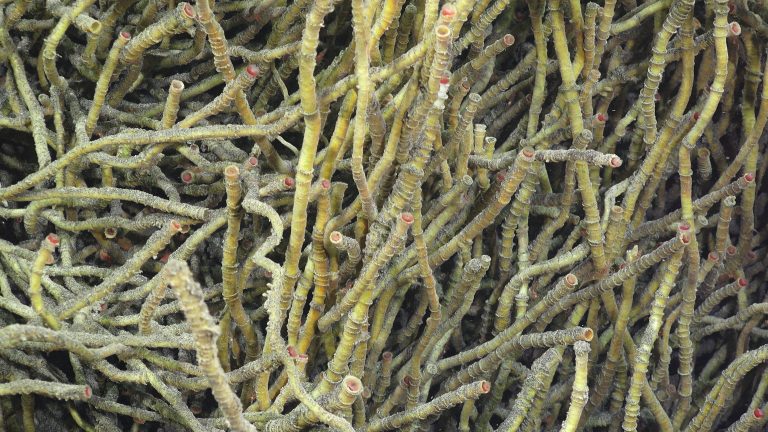
This species of tubeworm can live for hundreds of years, and at Daikoku they seem to be taking advantage of the dense plume coming out of the summit crater. For the ROV, it’s a difficult angle to reach as they are living on the inside rim of a crater with vertical cliffs near the top of Daikoku. It takes some real concentrated work to find a good spot to land and be stable enough to grab a sample, being very careful not to dislodge any of the rocks near by. Eventually SuBastian grabs a perfect sample, and afterward we try to work inside the deep crater, but have to retreat because of low visibility.
Difficult day for fishing
We lay some more fish traps on a sulfur crust area teeming with the flatfish, and leave them for a couple hours. We return but the fish are not biting today and the traps stay empty. Unfortunately this is not one of those fishing trips where you can relax with a beer and exercise your patience… we are tight on time and we will have to move on. It makes us all the more glad we got some good samples yesterday.
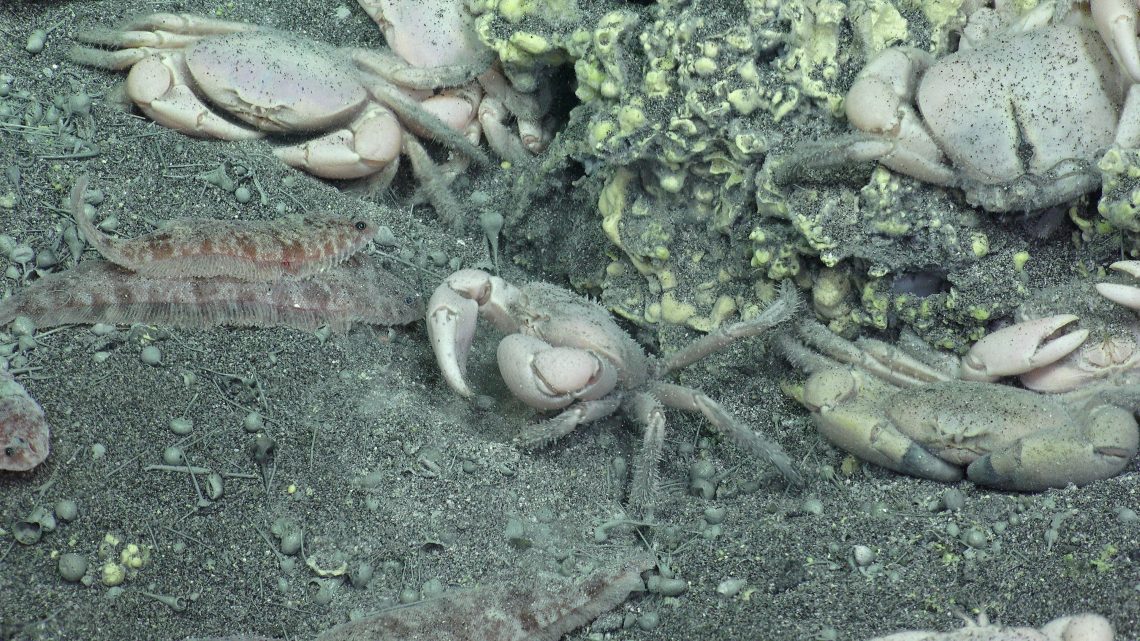
We have slightly more success with the crabs, but they too prove tricky to collect, in the end we manage to bring two to the surface. A small sample size but it will be really illuminating to try and learn more about these hardy creatures.
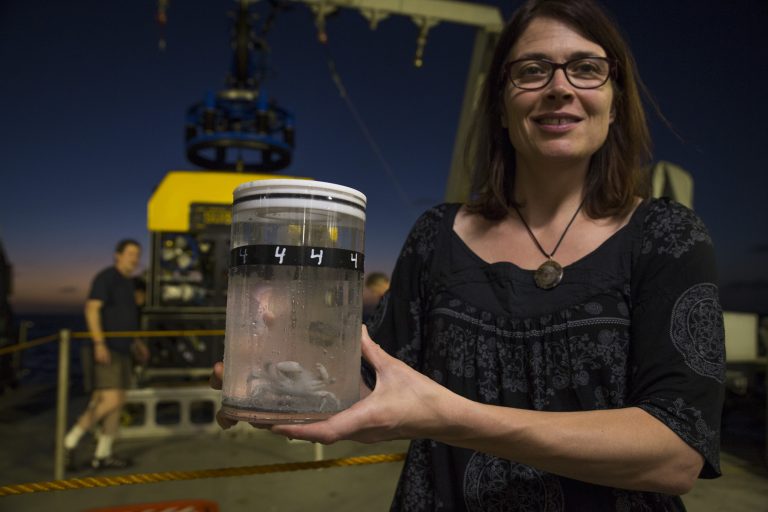
Sulfur mystery
A real highlight of the day comes near the end… All through the dives at Daikoku we’ve seen these intriguing tadpole-shaped sulfur needles on the seafloor, both in our sampled sediments and floating past the camera lens in the water column. We saw yesterday under the microscope that the “heads” of the “tadpoles” are tiny hollow spheres, apparently formed by gas bubbles. Today, we get an amazing shot of these sulfur needles forming.
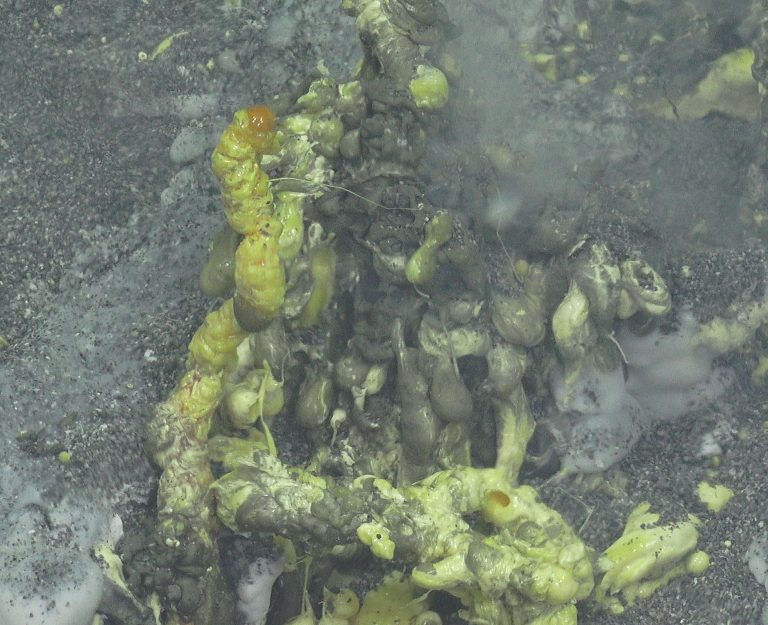
They are formed where gas bubbles (probably CO2) rises through molten sulfur, dragging some of the sulfur along with them. Some sulfur gets spat out in little coloured blobs, and slowly builds miniature chimneys. The crew, and science team all gather round the monitors amazed at these little sulfur chimney factories. It’s times like this you wish you could record the sounds down in the ocean! For now you’ll have to apply your own sound effects.
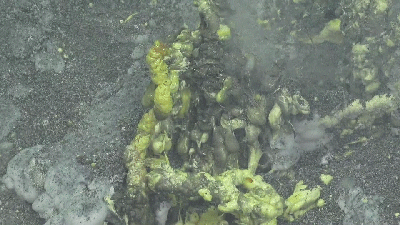
A Long night ahead
We recover the ROV from it’s dive under a hazy sunset, the only lights visible in the sky are the crescent moon and Venus, a reminder that we sit on the surface of the sea floating in between these two extraordinary worlds. The scientists retrieve the vent fluid samples, sediment and vent animals, it’s going to be a long night of processing.
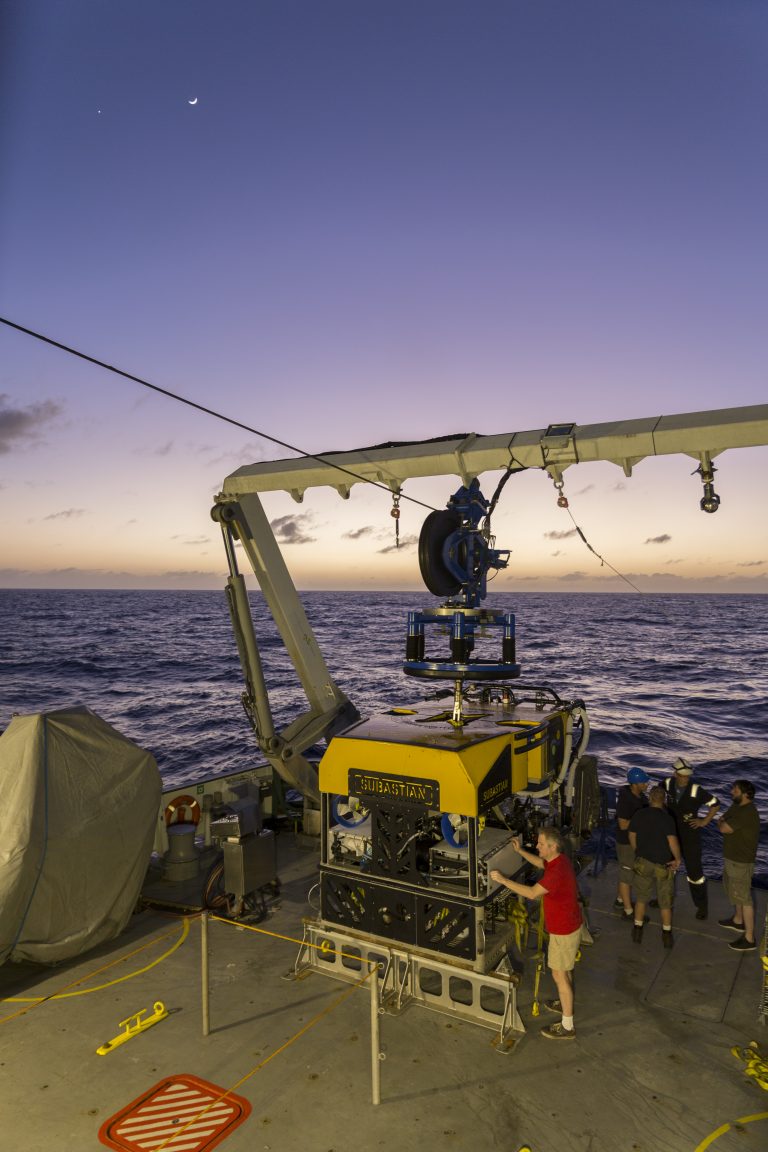
We get word that weather is improving slightly in the south which is positive news for our back-arc segment of the trip. The forecast could have good news for that in a few days, but for now we make the call to stay in the arc. We are heading for Chamorro seamount for the next dive. Revisiting a new vent site discovered earlier this year by the Okeanos Explorer. This will be the second ever dive in the area. They found a host of small sulfide chimneys on bare lava rock with shimmering clear vent fluids. We are hoping to see vent animals included “hairy snails” and shrimp among others. We’ll be looking to amass a range of samples of the fluids, microbes, animals, sulfides, and lavas.
We hope you’ll join us on the livestream to venture into these rarely seen worlds, who knows what we might see this time.
